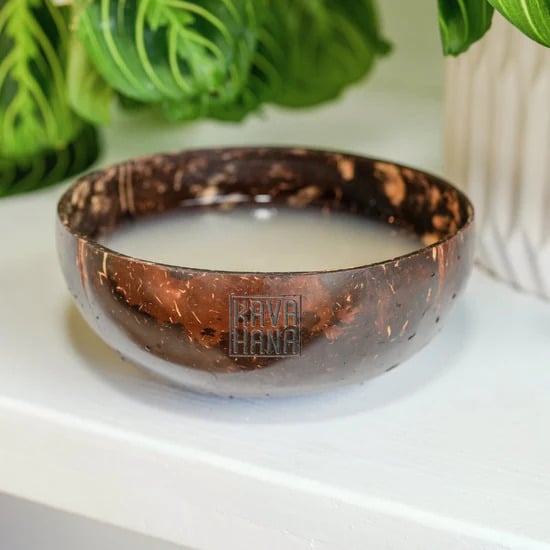The kava plant, known for its calming effects, originates from the South Pacific islands. It’s been used culturally for centuries in religious and traditional ceremonies and plant medicine. It comes from the pepper plant, Piper methysticum. Its roots are used to create an earthy drink known for its calming and mentally relaxing effects.
Other names kava’s known as
Like many things that have origins in different places, the kava plant goes by many different names depending on where it’s coming from or where you’re drinking it.
Some of these other names are:
- Kava kava
- Kawa kawa
- ‘Awa
- ‘Ava
- Malok/Molok
- Yaqona/Yagona
- Seka
- Wati
- Saukau
Where it grows
Kava is found in the Pacific islands. It likes to grow at altitudes 150 -300 meters (490-985 feet) above sea level and prefers rocky ground that drains well in rainy climates. It can grow up to 6 meters (20 feet) tall but, when grown, is usually harvested at 2- 2.5 meters (6.5- 8 feet) tall.
Interestingly, kava doesn’t have seeds, so it relies only on its roots to spread and grow new plants.
Key parts of the kava plant
The kava plant has three key parts: the leaves, the stem, the roots, and the rhizomes. Traditionally, the root and rhizomes are what kava is most valued for the drink. This is where the highest level of kavalactones and flavokavains are located, giving kava its well-known effects.
The stem and peelings are usually used to grow new kava plants. They are also sometimes mixed with the roots to make beverages, however their high alkaloid content makes the toxicity level high.
And finally, the leaves. The leaves are not typically used for beverages in the same way the roots are. However, they have strong antimicrobial and anti-inflammatory properties, making them useful in treating headaches, skin irritations, and rashes. The leaves, like the stems, have high levels of alkaloids, so they should be used with caution.
The two root sections
Kava has two different sections to its roots;
- Crown roots
- Lateral roots
Crown roots are larger parts of roots that can be harvested as “kava chips.” These make up about 80% of kava’s roots. Lateral roots are smaller and branch out from the crown roots. They are about 20% of kava’s roots but have the highest level of kavalactones. Because of this, they are considered the most valuable kava and are usually reserved for only premium-level products.
Kavalactones
Kavalactones are the plant’s active ingredients. There are 18 different types, but only six are known to be players in the effects of kava. These are:
- Desmethoxyyangonin (DMY)
- Dihydrokavain (DHK)
- Yangonin (Y)
- Kavain (K)
- Dihydromethysticin (DHM)
- Methysticin (M)
Each of these shows up in different levels in each kava plant and has different associated effects and feelings.
The different kava plant cultivars and chemotypes
There are 75 known kava cultivars, all linked to the country they come from. Kava comes from eight island nations: Fiji, Hawaii, Vanuatu, Tonga, Samoa, Micronesia, Papua New Guinea, and French Polynesia. Each cultivar from these countries has slightly different effects. This is due to the kavalactones present and the chemotype of each kava cultivar.
The chemotype refers to the chemical makeup of the plant. Scientists will look at the different levels of kavalactones in each plant and list them in order of prevalence. For example, if a plant has the chemocode 346125, we know that Yangonin (3) is the highest cultivar, then Kavain (4), Methysticin (6), and so on. This creates a unique chemocode for each plant.
Once the chemocode is known for a cultivar, it can be grouped with others with similar effects. These are known as chemocode groups and are categorized at A through I.
Knowing kava cultivars and chemocode groups helps you better understand the kava plant you may want for the experience you are looking for. For instance, chemocode groups A-D are NOT recommended for recreational drinking due to their unwanted side effects. It’s the same for groups E and F as they have high levels of DHK and DHM, which are associated with strong negative effects like nausea, headache and can last for much longer (up to two days!). However, groups G-I are the kavas we want to drink as these have the kavalactones that give us the known mental and physical effects we know kava for.
For details on the varieties of kava, check out our article here
Tags: cava plant, yagona leaf, yagona leaf, kava plants


